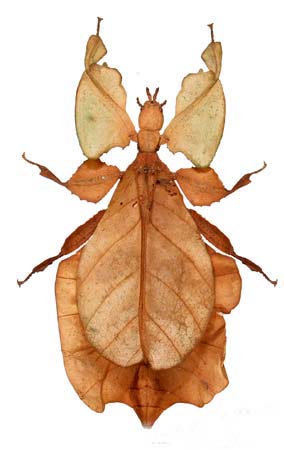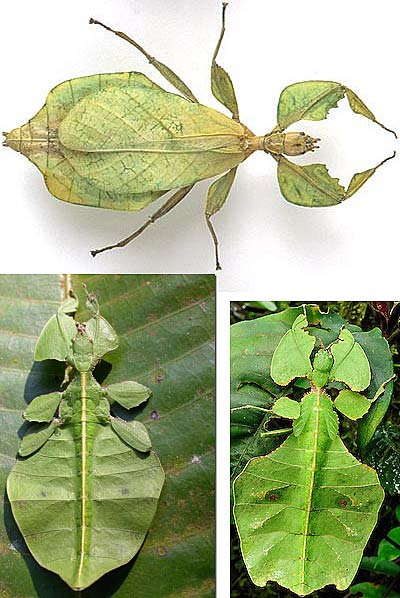Leaf Insect – The Phantom

Adorning the forest like ornaments of evolution, leaf insects are amazing for their incredible camouflage. Called “leaf mimics or moving leaves”, these ancient insects are grouped together with stick insects as phasmids in the order Phasmida. Their name comes from the Greek term “phasma” meaning phantom; they are some of the most cryptic creatures of the rainforest, nearly impossible to tell apart from the vegetation.
If survival lies in the details, then leaf insects are masters. Their green bodies take the shape of old leaves, complete with vein patterns, a midrib and even fungus splotches. Some newborn leaf insects are reddish to better hide among the forest floor leaf litter until they start feeding on plants and eventually turn green. Phasmids tend to stay motionless to avoid detection by reptiles, birds and other predators seeking a fleshy snack.

Male leaf insects are usually smaller and more slender than the females. This allows them to fly and search for more mating partners, since the females tend to stay higher up in trees. Mostly found in tropical forests, these intriguing insects inhabit highland and lowland habitats and some species reproduce without mating.
Most of the over 3000 species of phasmids are stick insects, with only a few dozen leaf insect species. In some countries, like Malaysia, collectors capture and make decorative displays of these colorful insects to sell to tourists, along with butterfly and beetle collections. It is really not known if the tourist trade threatens any leaf insect species.
If you’re ever in the jungle, take a flashlight and hit the trails at night to catch a glimpse of these fantastic phasmids and marvel at their evolutionary designs.
